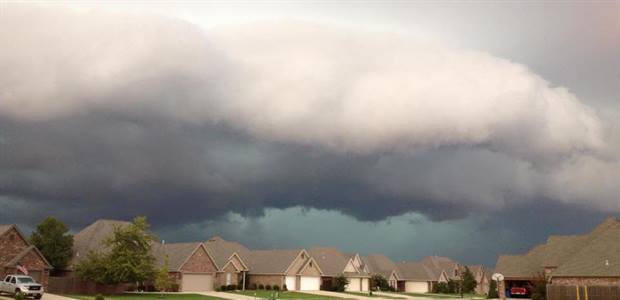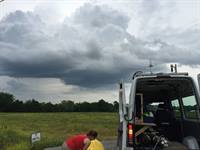
A study of tornadoes in the southeastern United States begins its second year this month as NOAA Research announces awards of $2.5 million in grants presented to partner institutions.
Scientists from more than 20 organizations are part of VORTEX-Southeast, a program to understand how environmental factors characteristic of the southeastern United States affect the formation, intensity, structure and path of tornadoes in this region. VORTEX-SE researchers will also determine the best methods for communicating forecast uncertainty related to these events to the public, and evaluate public response.
NOAA is supporting research in three main areas: improving forecast models, addressing risk awareness and response, and observing and modeling tornadic storms and their environments. A list of all the grants is available here: http://www.nssl.noaa.gov/projects/vortexse/supported-2017/
 This past spring, researchers spent about seven days during a two-month period gathering data on storms around Huntsville, Alabama, using an armada of instruments. They targeted a range of weather situations from multiple rapidly evolving supercell thunderstorms to days when anticipated storms failed to develop. A similar field experiment is planned for spring 2017.
This past spring, researchers spent about seven days during a two-month period gathering data on storms around Huntsville, Alabama, using an armada of instruments. They targeted a range of weather situations from multiple rapidly evolving supercell thunderstorms to days when anticipated storms failed to develop. A similar field experiment is planned for spring 2017.
With a year’s worth of data in hand, researchers are gaining insights into how to study storms in the southeast, which has a very different terrain from the Great Plains, said Erik Rasmussen, VORTEX-SE project manager and research scientist for the University of Oklahoma’s Cooperative Institute for Mesoscale Meteorological Studies working at the NOAA National Severe Storms Laboratory.
 “We now have a tremendous amount of information about what we can and can’tobserve in the southeastern environment, and an understanding of how to move forward from here. We know what to expect and how to observe it, ” Rasmussen said. “We’ve learned a lot in the social science related studies as well — where we should focus our attention to answer the critical questions of how weather information is used and how people respond.”
“We now have a tremendous amount of information about what we can and can’tobserve in the southeastern environment, and an understanding of how to move forward from here. We know what to expect and how to observe it, ” Rasmussen said. “We’ve learned a lot in the social science related studies as well — where we should focus our attention to answer the critical questions of how weather information is used and how people respond.”
VORTEX-SE activities are supported by special Congressional allocations of more than $10 million to NOAA made in 2015 and 2016.
Contact: Keli Pirtle, National Severe Storms Laboratory, (405) 325-6933, keli.pirtle@noaa.gov


